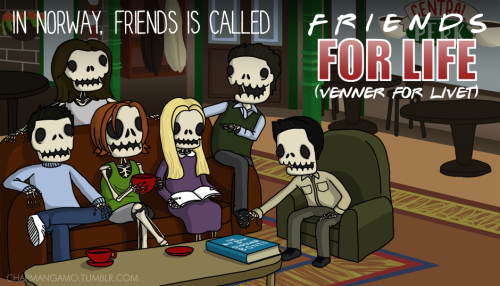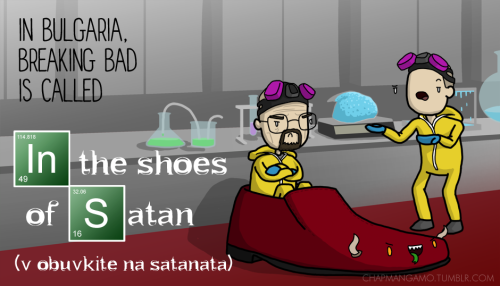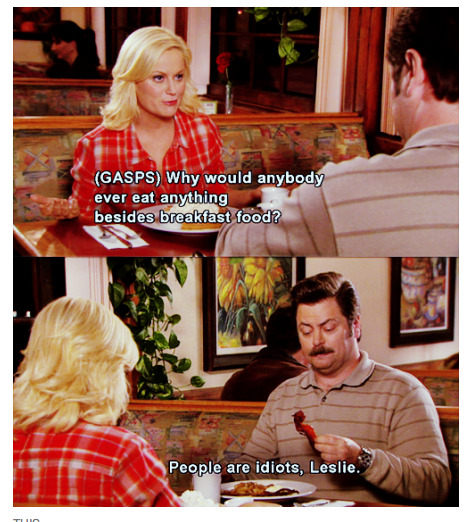Yesterday, I shared the thoughts of a recent college grad who gave his reasons for abandoning affirmative consent. As he told it, women were more often frustrated by his deference than appreciative. He was most confounded by a woman who stopped his advances—he quickly listened—only to complain later that he wasn't more persistent. She was offering "token resistance," he thought, because while she wanted to hook up, she didn't want to be thought of as a slut. And while he didn't feel comfortable ignoring "token resistance," his perception of it helped sour him on affirmative consent. "One of my fondest sexual experiences started with making eye contact across a room, moved to a dance floor, and then to an empty bathroom," he offered by way of comparison. "Not a single word was ever spoken, because none had to be. We both knew and understood. I was a man and she was a woman, and we found ourselves drawn together in that beautiful way that men and women have been since a time immemorial, a time long before language was ever spoken."
That perspective is shared by an unknowable number of young men—enough, I think, that it represents an obstacle to spreading affirmative-consent culture. It also elicited some thought-provoking responses from other Atlantic readers.
One offered the young man insights gleaned from kink parties, arguing that what some regard as "natural" aspects of sexual culture are, upon reflection, not natural at all. Rather, they depend largely on the set of basic rules laid down:
I frequently attend kink parties whose rules prescribe affirmative consent for any physical contact. And the one thing I've never seen there is someone putting up token resistance and expecting it to be ignored. Everybody knows the rules, so somebody who says "hey, slow down" when they don't mean it—whether it's because of a reflex, or meant as flirtation (because yes, some people may do that), or any other reason—at least accepts that if they say no, they're responsible for having said it! This is not because everyone there is awesome or even well-intentioned; it's because saying "no" while meaning "yes" just won't work.
Your letter writer seems to fall into the trap of thinking that sexual norms are "natural," and that laws have to fit existing norms. But there's also a "traffic laws" element to sexual norms; declaring how people should interpret certain actions sets the meaning of those actions, even if they didn't have that meaning before.
"Token resistance" is a pretty dumb social norm for all kinds of reasons. You mention (as a possible response to the letter) that one might say some of the people who like it are rapists who appreciate the cover it gives them; while I think that's true, I also think there are plenty of women who expect to face social punishment if they don't follow this norm. My point is, those people are not going to necessarily go without sex if they live under affirmative-consent laws. They're going to say, "Hey, I guess if I say this, I'm not getting laid," and make their choice accordingly. (I think affirmative consent is a very good social norm but probably a terrible law. I hope I'm wrong about the second part.)
A female Stanford student posited that "token resistance" isn't a reason for men to abandon affirmative consent—it is a call to women to do their part to make it work:
This, to me, is exactly why women and men need California's new affirmative-consent law! It changes not just what we expect of men, but what we expect of women.We are in the middle of a transition ... to a world in which sex is collaborative and wanted. But we haven't yet had the kind of cultural change that causes all individuals to rethink the new burdens that this standard places on them. For men, I think it lifts burdens. Judging by the stories you've shared, it hasn't lifted them yet. And this is where new expectations for women come in. I'm not suggesting that women no longer think sexual leadership is attractive, but that women assert their desires .... Playing a game where saying "no" or "wait" is a ploy to realign one's self-perception as a slut versus a prude merely reinforces the notion that women are two-dimensional Madonnas or Whores, or that women always want it. It's up to women to stop playing this game—to see asking as attractive, or if not, to ask for the more assertive behaviors they want, to see deference as respect, to reject the idea that the only option available to our gender is to wait passively for the act and when unwanted, say no.
I urge others, especially those sympathetic to your experiences, to see this change as a positive one simply because it relieves men's pressure to read minds. It relieves their grasp of all the power in a sexual encounter ... there's a big difference between assertiveness and assault, and it's not up to you alone to tread those waters.
The next correspondent is a somewhat unlikely supporter of California's law:
I am 27 and a recent law-school graduate.I remember my first semester at law school in criminal law learning about an older study of college coeds at University of Texas. Around 75 percent had reported saying "no" to sex when they intended or wanted to have sex. In college, I rarely made the first move, and hearing this caused me to rethink my strategy. Assertiveness is clearly a desirable quality. Thereafter I began to be more bold but also conscious of body language and other signals. If a partner refuses initially, I pay close attention to whether she said, "I probably shouldn't," or unequivocally, "no." I sometimes test the "no," but will never cross the line to aggressive or pushy.
When I heard about California's new law, I thought back to our discussion of elements of rape and the previously mentioned study. My reaction was that this law is completely removed from the reality of modern dating and sets a potentially ridiculous standard for students to meet. However, I think ultimately it is positive.
Being assertive and recognizing body language are things that took me years to learn. This new standard will encourage partners to be more conscious of those small signals since consent may be nonverbal cues (like leaning in slightly when face to face versus cheating away [a stage term]).
- It will encourage women to be more open and assertive in their sex lives. (It is okay and does not make you a slut to say "yes," and saying "no" when meaning "yes" is confusing.)
- While the reality is that there will not always be explicit consent in adult relationships, college is different. The peer-pressured, alcohol-fueled hook-up culture (I went to Arizona State for undergrad, so not a total exaggeration) warrants greater emphasis on consent, even if that means missing potential hook-ups.
Remember, this is a standard to be implemented in disciplinary hearings, not a criminal statute, and holding college students and administrators to higher standards is understandable given their terrible track record. Students should remember that being assertive and confident does not preclude being respectful.
A male opponent of California's law writes:
If women want to be treated as equals—as they should be and as I do treat them—then it isn't too much to expect them to say "no" or "stop" if they don't like whatever a sexual partner is doing. If they say that one word, even once, it should be totally respected. If a man doesn't listen, that's rape, and he should be thrown in jail for years. But if those are the stakes, years behind bars probably getting raped, or in the current law getting expelled from college and branded a rapist, asking for a simple "no" or "stop" is not too much to ask.
The alternative is that some men will go to jail for misunderstandings or women who changed their minds after the fact. Of course men should ideally avoid even those situations, but how can I take women seriously as strong, independent equals if they infantilize themselves so much that they won't even take responsibility for saying no? If a man is threatening violence if she says no, even nonverbally, that's different. I'd vote for rape in those cases, but the standard should be, were any actions taken that would make a rational actor fear saying no? If not, then it shouldn't be rape even if there wasn't affirmative consent.
A woman explained why she opposes California's law, in part by sharing a harrowing experience:
My junior year of high school, a male "friend" stood between me and the door of an empty classroom. He asked for sex repeatedly, and I had repeatedly said no. When I attempted to leave, he stopped to "hug" me, tightly, and asked again. That time, I felt I could not get out of the room without fighting a fight I would likely not win, or giving up. I said yes—and although the experience left me with what my college psychologist would later call "symptoms of PTSD," under California's law, this would be considered consent ...
Her takeaway:
Requiring women say "yes" to demonstrate consent does nothing to help women for whom that "yes" was coerced or threatened. And women who gave "affirmative consent" under duress would have no legal recourse—their "yes" would be evidence against them.
She objected to "any law that uses a plaintiff's actions (or lack thereof) to determine the defendant's guilt" because it "necessarily places responsibility on the plaintiff to avoid being the victim of a crime—the jury tries the victim's responsibility, rather than the defendant's potential crime." What would she prefer?
The ideal policy would be sort of like a rational basis test for free will ... could the accuser rationally believe the defendant may legitimately harm them if consent is not given? In cases in which consent was not given and the accuser was harmed, the verdict should be obvious. In cases in which consent was given under psychologically questionable circumstances, this test would put pressure on the courts, or other evaluating bodies, to analyze the defendant's actions and the messages said actions could communicate. If these actions could reasonably communicate an intent to harm, then consent was not given freely.
Another woman looks back on college and explains why she didn't like giving affirmative consent:
Women don't want to be labeled sluts. Token resistance lets us dodge that question. I think what has bothered me about being asked for consent is I'm never really sure if I'm into it. So thinking about it makes me confused. I haven't been taught that it is okay to be into a guy, how to recognize if I'm attracted—all those things, I'm only thinking about now. So yeah, asking me if I want to can be difficult for me.
I replied, "If you're not really sure when asked for affirmative consent, do you think that means the standard is a good thing, and that those hookups ought to be stopped, or that it's a bad thing, because despite your uncertainty you want those experiences?"
She answered:
Basically, I think women need to separate sex from morality so that consent is positive and sexy for us, too. Some women can do it now, but those who can't are the ones fueling the idea of "token resistance." Hookups can be a very good thing, but they need to positively and spontaneously affirmed by both parties. Despite my uncertainty, I wanted those experiences, and the guy I was with took the time to verify that. It has been an exploration into how well I know my body, and it has been positive. The yes-means-yes law pushes everyone into that knowledge, because it is essentially the difference in the two ways of presenting the question "Do you want to receive further emails from the company?" when you buy something. Those emails mean more to the people who have to actually check yes, but they reach more people when they're automatically checked. They're just unwanted spam to most of them.
Does that make sense? I'm figuring out my ideas as I type.
A woman supportive of the law writes:
My partner and I don't just look for affirmative consent when interacting sexually, we actually still get verbal consent for a surprising amount of it. Four and a half years together, and we still don't have P-V sex without verbally checking in. The same is usually true for any kind of oral (if I'm leading into it slowly then sometimes I don't ask him, but I'm pretty sure he almost always asks). This isn't because we're scared of prosecution or anything, it's just what we do. It's normal for us. And no, it doesn't interrupt things. Talking about what you want to do to each other isn't what I'd call a turn-off!
To be fair, not everyone is the same as my partner and me, nor should they be. I've seen commentators who argue that the law is trying to dictate how we communicate, and I see why that would be a concern if it were true. I think it would be more true to say that the law is dictating that we communicate, in some way, which doesn't have to be verbal. That seems pretty defensible to me.I'm receptive to the idea that we need cultural change as much as or more than we need a legal change. The moral principle is easy to articulate, right? Every sexually active person has a moral responsibility to not have sex with anyone who does not want to be having sex with them. Back when I was hooking up with different guys, rather than being in a relationship, I can't say that seemed like an excessively difficult principle. I'm okay with the principle that, in order to keep their college enrollment, students have to make a good faith effort not to have sex with people who don't actively want to be having sex with them.
A professor at a prestigious institution of higher learning in the Northeast writes:
To live or work in academia and openly express that young man’s perspective is to take a risk, especially if you’re a straight male. If you do, you’re practically begging to be made into a negative example. You just have to hope that women who understand the truth that guy is expressing will say it for you. When the sexual-safety-training session takes place—and this goes for male students and instructors alike—it’s best to say whatever the session’s leaders want to hear.
If you push back on their often one-sided and politically driven views of human sexual response, you can easily be branded a conservative, a sexist, a misogynist, or even a potential rapist who needs to be monitored. (Although I hate to confirm a Fox News talking point, “conservative” is indeed a damaging slur at far too many universities.) Those of us who hope to discuss this subject honestly are caught between the psychopaths who tweet misogynist and violent garbage and the Judith Butler wannabes who use all manner of bullying and demagoguery in an attempt to—this is not an overstatement—silence male voices in the academy.
(Meet Cathy Young.)
Finally, a female student writes:
In all of my sexual experiences, I have never been asked for permission nor have I had to ask someone for permission. It has been clear and obvious that we were both interested. I have been in experiences that were not consensual. I know what enthusiastic consent looks like because I have not given it before. I don't think that excludes men from knowing what it looks like—they have given enthusiastic consent before. And they have also not given it.
Anonymous seems perplexed … as if by discovering that some women don't like to be asked for permission every step of the way, that means the only alternative is … what? Not clearly defining consent? Not getting laid? Eschewing his feminist upbringing because one woman suggested that she would like to be ravaged? I have never been that confused during sex .... I have never been unsure about what comes next or when it needs to continue or stop. And I don't think that means I am lucky or extra insightful. It means that I am capable of thinking one level deeper than Anonymous appears to be about humans.
Can't I like confident men in the same way that men like confident women? I feel like this sort of this defines the non-problem that Anonymous is bringing up. Confident doesn't mean rapey. Not asking for permission doesn't mean rapey. It is possible to be all of those things—passionate, spontaneous, aggressive, raw–without raping someone, or assaulting someone. I wish I could say I sympathize with Anonymous' confusion on this topic, but I just don't. Perhaps if you can't figure it out, then you just shouldn't be having sex.
More correspondence on this subject is welcome (conor@theatlantic.com), but let's move past directly responding to the letter that inspired this string of responses.
This article was originally published at http://www.theatlantic.com/national/archive/2014/10/the-traffic-laws-of-sexual-culture/381704/
 All around the country, parents are sitting down to have the talk with their children. Not about sex or mortality or college. They're having the talk about Gamergate.
All around the country, parents are sitting down to have the talk with their children. Not about sex or mortality or college. They're having the talk about Gamergate. 



























 There are few people working in standup that are more divisive than Kathy Griffin. It doesn’t stem from controversial remarks, like many other comedians in her peer group, so much as taste. People who love her think that she is tremendous. People who don’t like her think that she's a talentless hack. There is very little middle ground, and even though she recently become only the third woman ever to win the Grammy for Best Comedy Album, she typically does not get respect from the mainstream.
There are few people working in standup that are more divisive than Kathy Griffin. It doesn’t stem from controversial remarks, like many other comedians in her peer group, so much as taste. People who love her think that she is tremendous. People who don’t like her think that she's a talentless hack. There is very little middle ground, and even though she recently become only the third woman ever to win the Grammy for Best Comedy Album, she typically does not get respect from the mainstream.